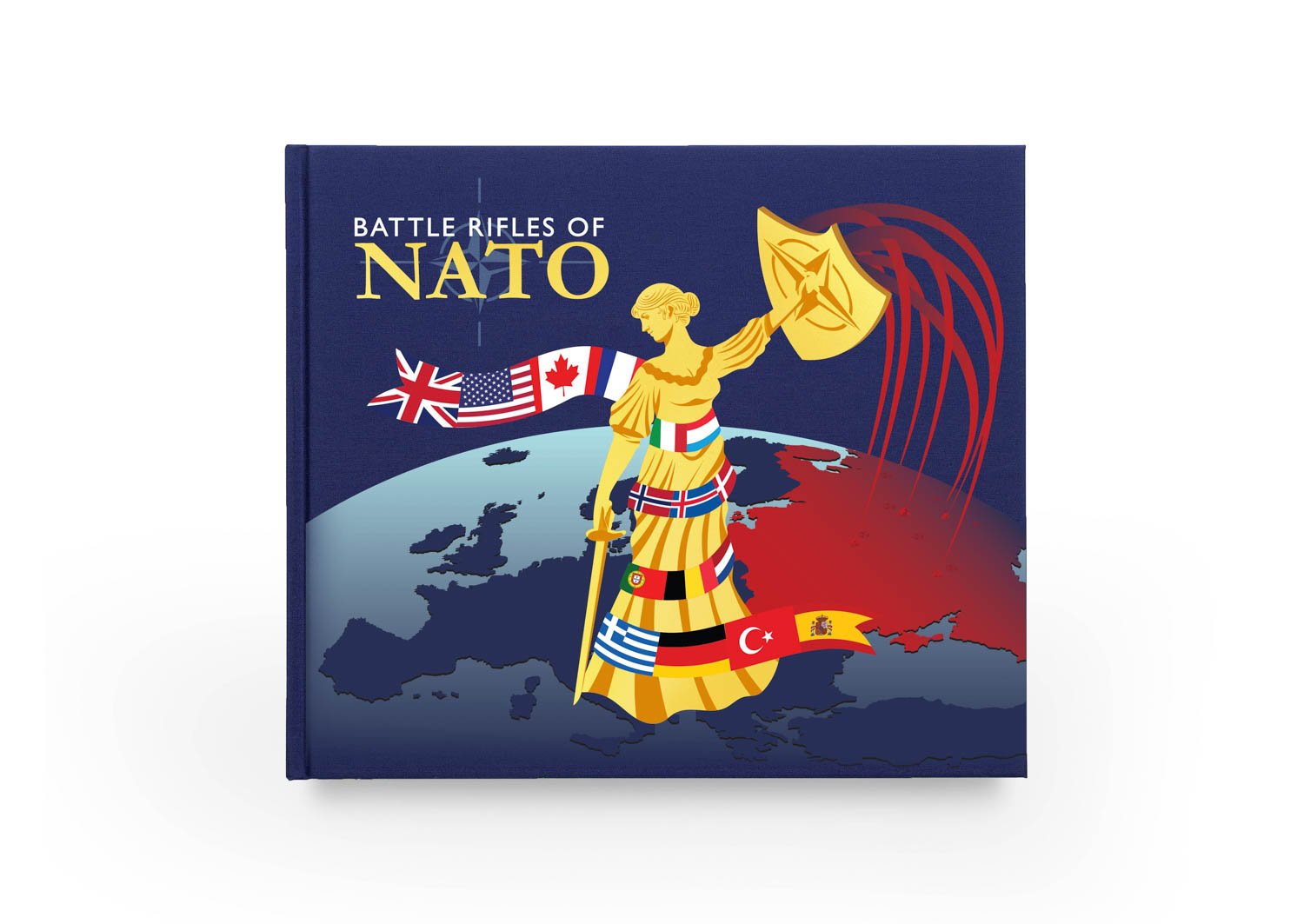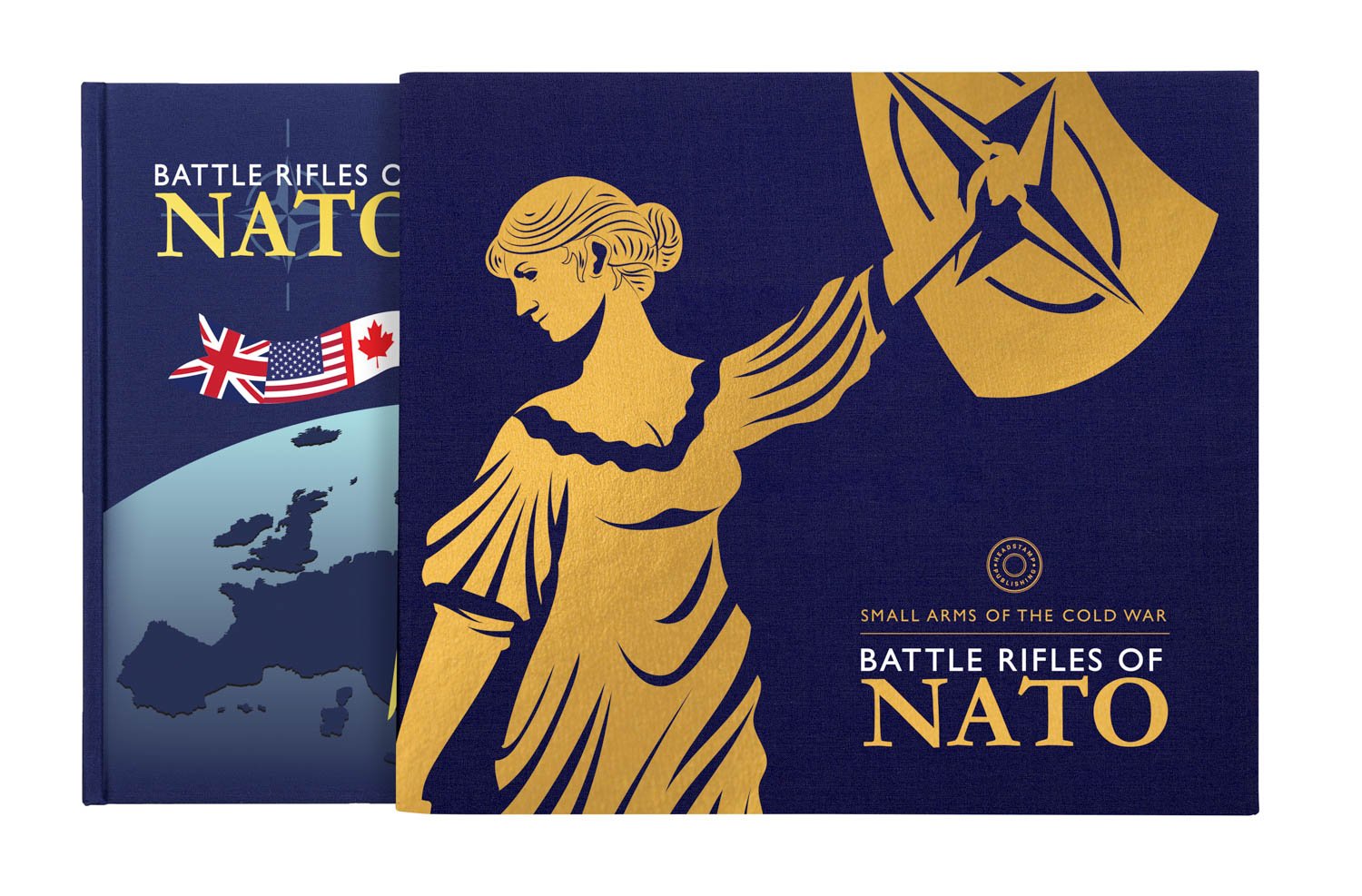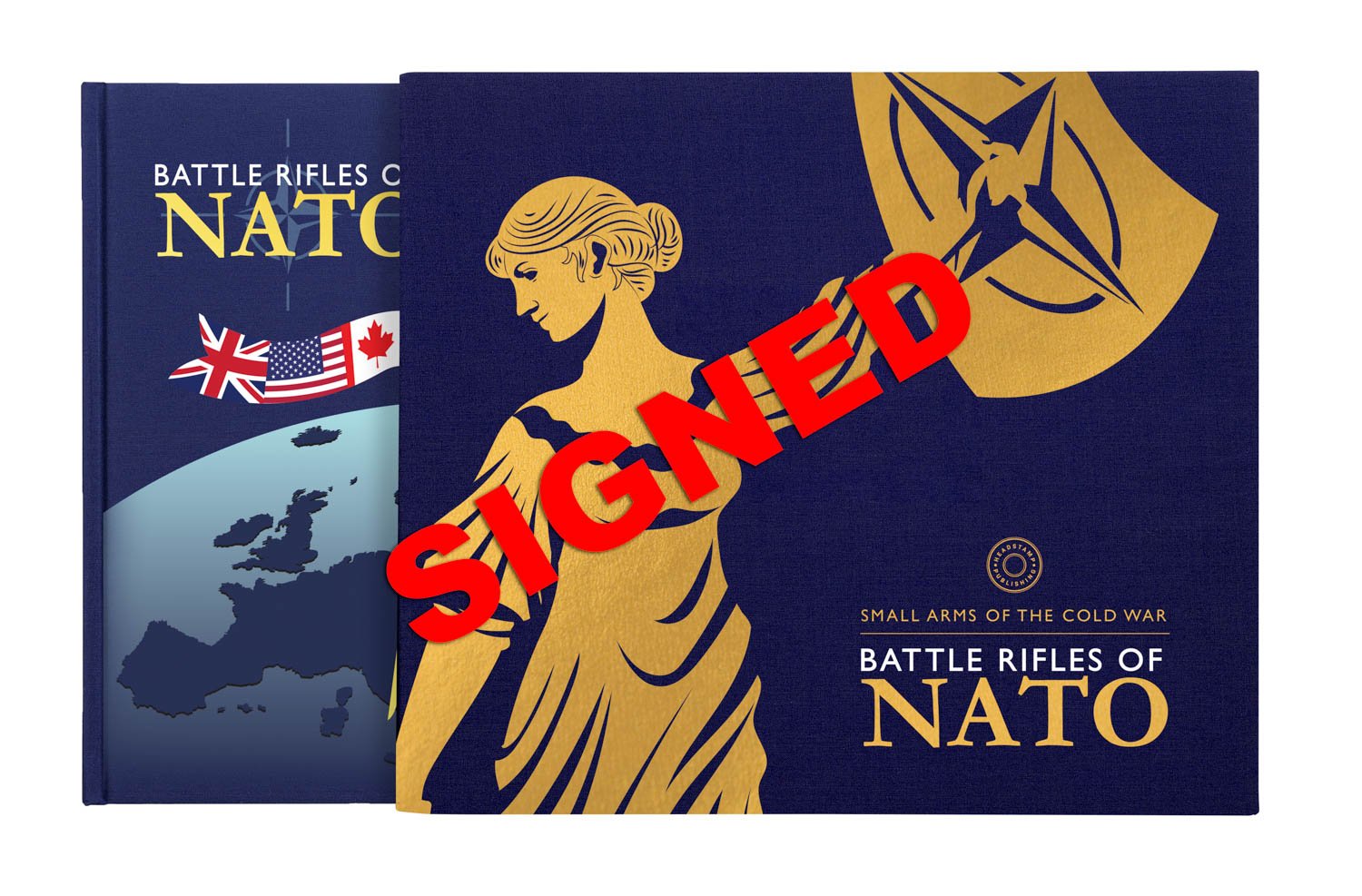SMALL ARMS OF THE COLD WAR: BATTLE RIFLES OF NATO
by Ian McCollum
The Battle Rifle is a class of infantry rifles inextricably linked to the NATO forces of Cold War-era Europe. After the Second World War, almost all Western powers moved to “full-power”, magazine-fed, typically select-fire rifles for infantry use, in the face of the Eastern bloc which adopted rifles chambered for “intermediate” cartridges instead. For several decades these heavy hitting Battle Rifles were predominant in NATO forces, evidenced by iconic designs like the FAL and G3. Though the anticipated climactic battles between NATO and the Warsaw Pact on the German plains never happened, these rifles did see combat outside of Europe in the world’s scattered revolutions and bush wars.
Small Arms of the Cold War: Battle Rifles of NATO features more than 70 different battle rifle models, divided into seven chapters by type:
Precursors – the development of the Battle Rifle from the Mondragon through the Second World War
FAL – FN’s iconic Fusil Automatique Leger, designed by John Browning’s protege Dieudonné Saive in Belgium
G3 – the roller-delayed blowback system designed by Mauser engineers in the late days of the Second World War, and its progeny
M14 – the updated American Garand rifle, and its cousins like the Italian BM59
AR-10 – Armalite’s futuristic wonder rifle that came so close to adoption and which ultimately created the AR-15
MAS – the French copy no one, and no one copies the French, especially in Cold War small arms
Others – lesser-used but still relevant rifles, from the E.M.2 bullpup to the SIG Stgw. 57 and the Danish LAR
This book series blends insightful history and commentary from Ian McCollum with the gorgeous photography of James Rupley to give readers insight into the whole class of Battle Rifles, which are surprisingly poorly documented today. Small Arms of the Cold War: Battle Rifles of NATO puts them all at a reader’s fingertips in more than 460 pages of luscious detail.
















